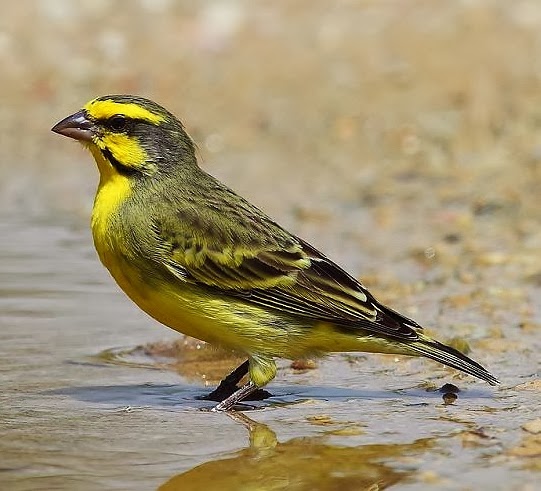 |
| Photo by Myron Tay (Oriental Bird Images) |
Common name:
yellow-fronted canary (en); canário-de-testa-amarela (pt); serin du Mozambique (fr); canario de Mozambique (es); Mosambikgirlitz (de)
Taxonomy:
Order Passeriformes
Family Fringillidae
Range:
This species is native from sub-Saharan Africa, from southern Mauritania to Ethiopia and south to Angola, Botswana, Mozambique and eastern South Africa. They are popular cage birds and have been introduced to many areas around human settlements around the globe, namely Haiti, Puerto Rico, São Tomé, Mafia island, Mauritius and Réunion.
Size:
These birds are 11-13 cm long and have a wingspan of 20-23 cm. They weigh 8,5-17 g.
Habitat:
The yellow-fronted canary is mostly found in dry, open savannas, namely Acacia, Burkea and miombo, also using grasslands, coastal scrublands, mangroves, sand dunes, pastures and agricultural areas. They are present from sea level up to an altitude of 2.300 m.
Diet:
They feed mainly on seeds, of both wild plants and domestic crops such as sorghum, millet and sunflowers. They also eat some flowers and leaves, nectar, and some insects such as termites, aphids, fly larvae, caterpillars and grasshoppers.
Breeding:
Yellow-fronted canaries generally breed during the local wet season. They are socially monogamous and territorial, although in some cases several pairs nest in the same tree. The female builds the nest, a small deep cup of tendrils, bark fibres, leaf petioles, seeds, dry grasses and sometimes pieces of string, bound with spider web and lined with rootlets and plant down. It is typically placed in a fork in a scrub, tree or creeper, roughly 1-8 m above ground.The female lays 2-5 eggs, which she incubates alone for 13-15 days. The chicks are fed by the female while the male collects the food, fledging 16-24 days after hatching, but only becoming independent some 6 weeks later.
Conservation:
IUCN status – LC (Least Concern)
This species has a very large breeding range and is described as common to locally abundant. The population is suspected to be in decline as a result of capture for the cage bird trade.







